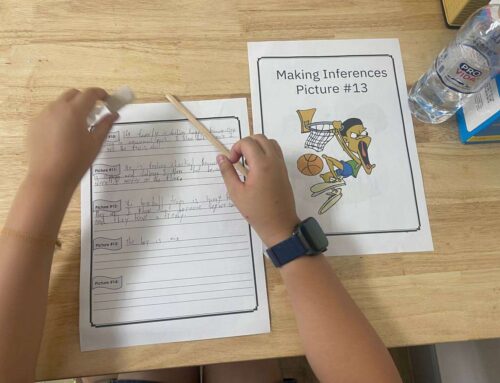When a child can think of great ideas but struggles to get them down on paper, dysgraphia might be the reason. Unlike simple “messy handwriting,” dysgraphia is a learning difficulty in written expression. It affects handwriting, spelling, grammar, and the ability to organize thoughts in writing. This guide explains dysgraphia in a clear way for parents in Phnom Penh, covering screeners, classroom supports, and the roles of occupational therapists (OTs) and speech-language pathologists (SLPs).
How to spot dysgraphia at home and in school
Children with dysgraphia may:
-
Avoid writing tasks or tire quickly when writing.
-
Write letters that are uneven, reversed, or hard to read.
-
Struggle with spacing, punctuation, or spelling despite knowing the words orally.
-
Have wonderful ideas but produce very short or incomplete written work.
It is not a sign of laziness—it is a real difficulty with the motor, language, or processing skills needed for writing. For background, see how learning disabilities impact children in Cambodian classrooms.
Screening tools parents and teachers can use
Formal diagnosis requires professional evaluation, but early screening helps:
-
Observation checklists: teachers can note legibility, speed, and effort compared to peers.
-
Writing samples: look for consistency across tasks (homework, dictation, creative writing).
-
Developmental checklists: compare fine-motor milestones with resources like our scissor skills guide.
-
Assessments: At OrbRom Center in Phnom Penh, we use practical tools from our assessments program to check handwriting, motor planning, and written expression.
For broader learning context, see our overview of academic assessments.
Classroom supports that make a difference
-
Extra time: reduce pressure during note-taking and exams.
-
Alternative output: allow oral answers, typing, or drawing organizers before writing.
-
Chunked tasks: break writing into short, clear steps.
-
Assistive technology: keyboarding, speech-to-text, and graphic organizers.
-
Positive feedback: value ideas, not just neatness.
Inclusive strategies such as visual prompts and structured writing plans also support students with dysgraphia, similar to supports used for students with dyslexia.
The role of OT and SLP in dysgraphia support
-
Occupational therapy (OT): OTs target fine motor control, posture, pencil grip, and hand strength. At OrbRom, children practice through play-based activities, like shape puzzles or clay exercises, to build endurance for writing. Explore more about our occupational therapy services.
-
Speech-language therapy (SLP): SLPs work on organizing thoughts, sentence structure, and narrative skills so children can express themselves clearly in writing. See our speech therapy services.
Together, OT + SLP provide a full approach: strengthening both the physical act of writing and the language demands behind it.
Support for parents in Phnom Penh
If you notice your child struggling with writing, don’t wait. Early intervention makes schoolwork less stressful and builds confidence. At OrbRom Center in Phnom Penh, we provide assessments, occupational therapy, and speech-language therapy tailored for children with dysgraphia.
Learn more about developmental assessments and how they guide therapy and classroom planning.
We are the only Preschool specialized on children with special needs in PhnomPenh.
- Internationally qualified teachers
- Cambodia’s largest sensory room
- Outdoor swimming pool
- Covered outdoor playground
📞 Phone: 077.455.993
Telegram Link: https://t.me/OrbRom





